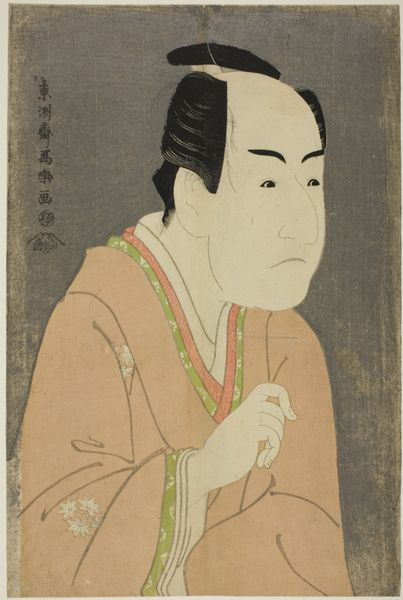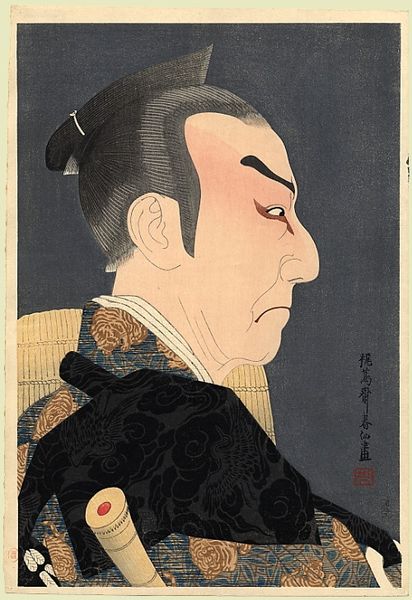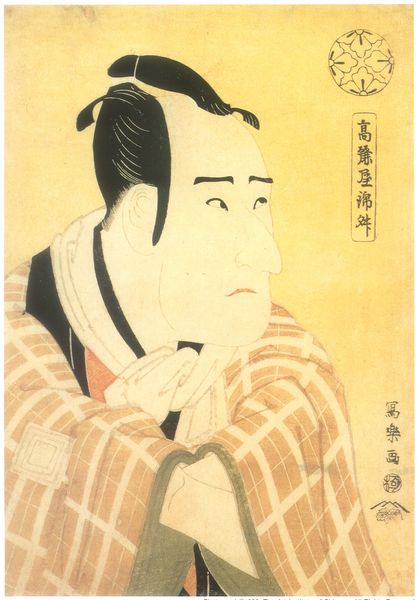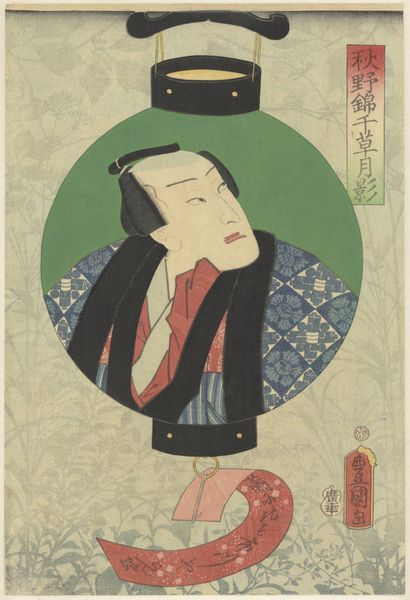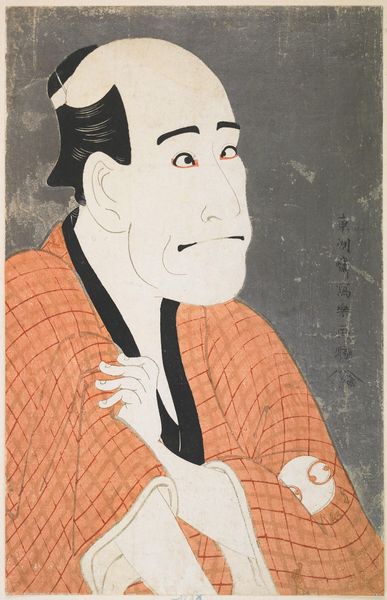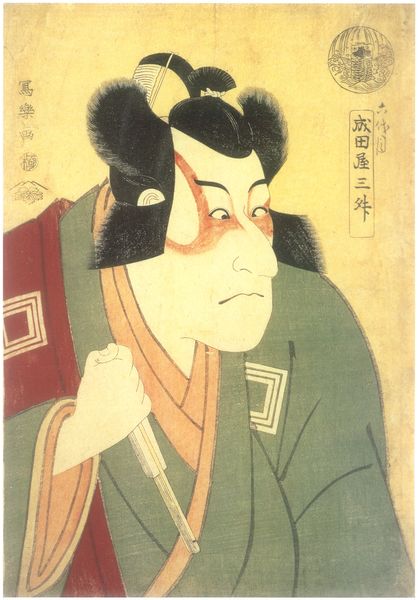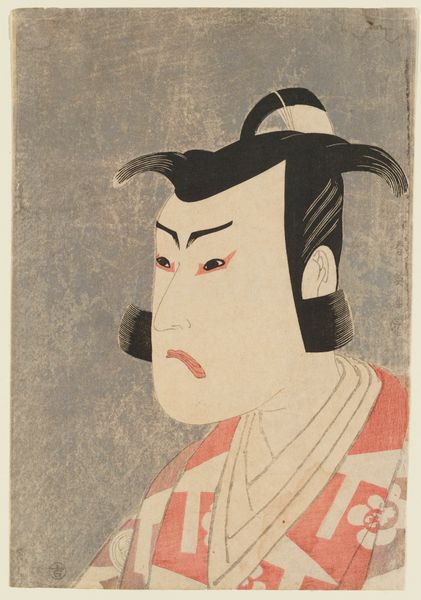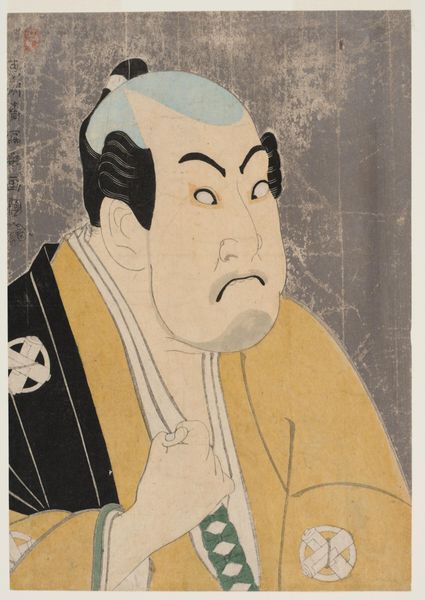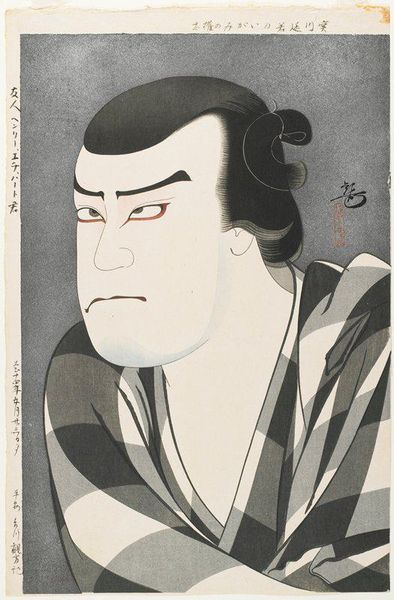
Dimensions: 15 9/16 × 10 3/4 in. (39.53 × 27.31 cm) (image)23 × 19 × 1 1/2 in. (58.42 × 48.26 × 3.81 cm) (outer frame)
Copyright: No Copyright - United States
Editor: Right, so here we have "Actor Onoe Matsusuke IV as Gorōji in Kagatobi," a woodblock print from 1920 by Yamamura Toyonari, housed here at the Minneapolis Institute of Art. It's such a striking image! There’s almost something… unsettling about his expression. What strikes you most about this portrait? Curator: Unsettling, yes, but also incredibly insightful. Toyonari’s got a keen eye for the performative. This isn’t just a likeness; it’s a distillation of character, wouldn’t you say? Ukiyo-e prints often focused on idealized beauty, but here, Toyonari emphasizes the individuality, the quirkiness, even… dare I say, the slight absurdity of the actor in this role. Notice how he uses the exaggerated features to tell a story beyond just the physical resemblance. That heightened nose! Editor: It’s definitely more caricature than straightforward portraiture, agreed! And those vibrant colors – especially the red on his cheeks and fingers. Is there a particular significance to that choice? Curator: Precisely. Color is never just decorative. In Kabuki theater, color is code. Red signifies passion, heroism, anger… and of course in kabuki makeup a flush face indicates anger or strong emotion. The almost clinical way it is applied to the fingers makes it all a little too overt. Do you see how he emphasizes the artificiality of performance itself. As for the letter that Goro holds so close to his heart? Perhaps he is a victim, perhaps a conspirator, the choice, or trap if you will, is ultimately his own! Editor: I see! So it’s like a meta-commentary on the act of performance itself, capturing not just the character, but the actor inhabiting that role. The story *around* the story. Curator: Exactly! We’re seeing layers upon layers. It’s not just what the actor is portraying; it's the artist's take, almost an inside joke with the viewer. Editor: This really gives me a new appreciation for Ukiyo-e beyond just pretty landscapes and geishas. Curator: Me too! And next time you watch live theatre, perhaps consider where the art of the actor intersects the art of portraiture.
Comments
minneapolisinstituteofart about 2 years ago
⋮
Third design in a set of twelve. Based on Onoe Matsusuke IV (1843-1928) as Kaminari Gorōji in the scene Yushima Tenjin chaya no mae of the play Mekuranagaya ume ga kagatobi 盲長屋梅加賀鳶 湯島天神茶店の前 (Plum Blossom Kaga Firemen and the Living Quarters for the Blind), performed at the Imperial Theater, June 1919. Matsusuke IV had also played this role at the premier of this play in March 1886 at Tokyo's Chitose Theater. Like his predecessors in ukiyo-e, Kōka conveyed the likeness of the actor as well as the character portrayed—thus suggesting the actor’s stage presence. Kōka based his actor prints on so-called bromides (buromaido), photos of actors sold to fans at performances, a practice that seems to have started as early as the 1880s and still exists today at the Kabuki Theater.
Join the conversation
Join millions of artists and users on Artera today and experience the ultimate creative platform.

